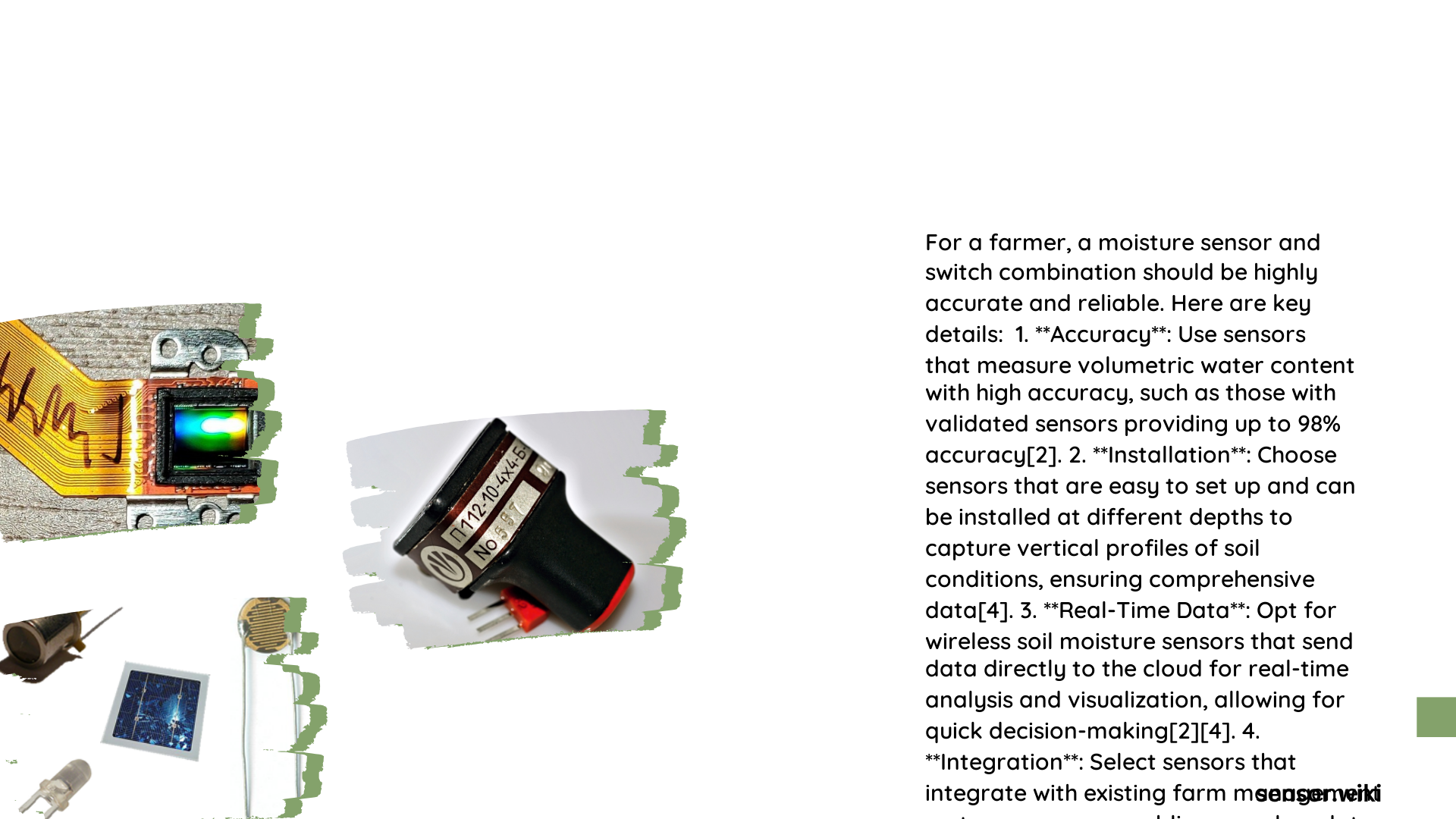Farmers face significant challenges in managing water resources efficiently, with traditional irrigation methods leading to substantial water waste and inconsistent crop growth. Moisture sensors and switches provide a technological solution that enables precise soil moisture monitoring, automated irrigation control, and data-driven agricultural water management, transforming how farmers approach crop hydration and resource optimization.
What Are Moisture Sensors and Switches in Agriculture?
Moisture sensors are electronic devices designed to measure the water content in soil, providing real-time data about hydration levels. Agricultural switches work in conjunction with these sensors to automatically control irrigation systems based on precise moisture readings.
Key Components of Moisture Monitoring Systems
| Component | Function | Typical Range |
|---|---|---|
| Soil Moisture Probe | Detects water content | 10-40% volumetric water |
| Electronic Switch | Triggers irrigation | 24 VAC operation |
| Control Unit | Manages sensor data | Battery or AC powered |
How Do Moisture Sensors Benefit Farmers?

Water Conservation Strategies
Moisture sensors offer multiple advantages for agricultural water management:
- Precise Irrigation Control
- Prevents over-watering
- Reduces water consumption by 20-40%
-
Minimizes soil nutrient leaching
-
Crop Health Monitoring
- Maintains optimal soil moisture levels
- Prevents drought stress
- Supports consistent plant growth
Technical Performance Metrics
Sensor Accuracy Specifications
- Measurement Precision: ±3-5% volumetric water content
- Response Time: 5 minutes between readings
- Operational Voltage: 9-24 VAC
- Typical Sensor Lifespan: 5-7 years
What Factors Influence Moisture Sensor Selection?
Critical Considerations for Farmers
Farmers must evaluate several parameters when choosing moisture sensors:
- Soil type compatibility
- Crop-specific water requirements
- Climate and environmental conditions
- Budget constraints
- Ease of installation and maintenance
What Are the Cost Implications?
Investment and Return Analysis
| Cost Category | Estimated Range | Potential Savings |
|---|---|---|
| Sensor Hardware | $99 – $165 | Water bill reduction |
| Controller | $300 – $2000 | 30-50% irrigation efficiency |
| Annual Maintenance | $50 – $150 | Improved crop yield |
How to Install Moisture Sensors Effectively?
Best Practices for Deployment
- Select representative soil locations
- Avoid proximity to sprinkler heads
- Install at appropriate root depth
- Calibrate sensors regularly
- Protect from physical damage
What Technological Innovations Are Emerging?
Future of Agricultural Moisture Management
- Wireless sensor networks
- Cloud-based monitoring platforms
- AI-driven irrigation prediction
- Integration with satellite imagery
- Real-time mobile notifications
Conclusion
Moisture sensors and switches represent a transformative technology for modern agriculture, enabling farmers to optimize water usage, improve crop health, and contribute to sustainable farming practices.
References:
– Waterswitch Control Units
– BaseStation 1000 Irrigation Controller
– Soil-Clik Sensor
